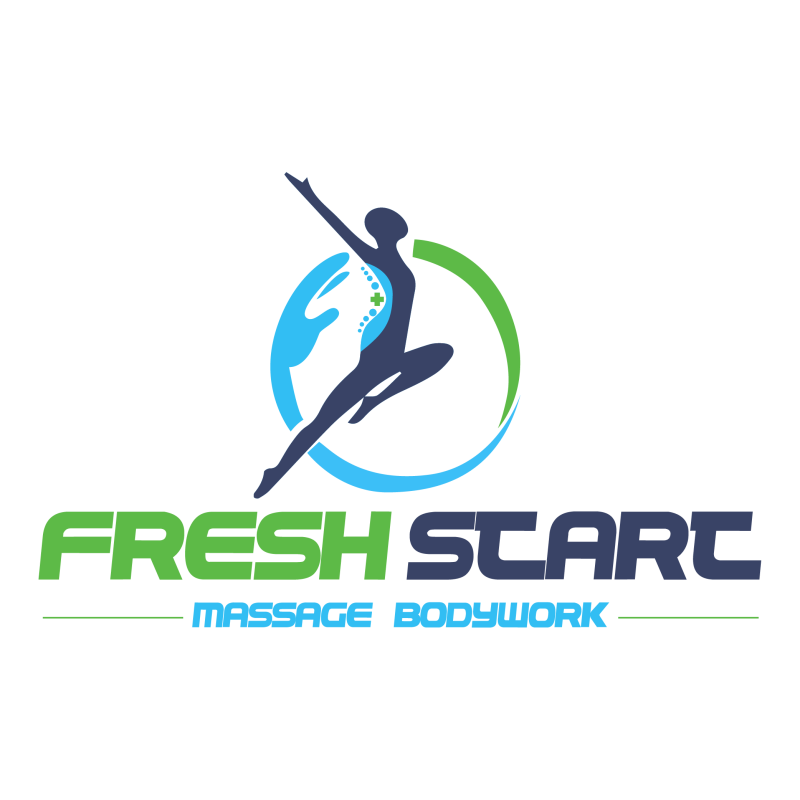
Services
Swedish Massage
What is Swedish Massage?
Swedish massage is a classic, relaxing massage style that uses long, flowing strokes to melt away tension and stress.It’s one of the most popular types of massage because it’s gentle, soothing, and perfect for overall relaxation.
How Does It Work?
Your therapist uses smooth, gliding techniques to:
✅ Improve circulation
✅ Loosen tight muscles
✅ Calm your nervous system
✅ Reduce stress and promote deep relaxation
The pressure can be light to medium, depending on your preference.
Who is Swedish Massage For?
This massage is great if you want to:
✅ Relax and de-stress
✅ Ease mild muscle tension
✅ Improve your sleep and mood
✅ Boost circulation and overall well-being
It’s ideal for first-time massage clients or anyone looking for a calm, soothing experience.
Benefits of Swedish Massage
✨ Relieves stress & anxiety
✨ Promotes better sleep
✨ Improves circulation & lymphatic flow
✨ Reduces muscle tension
✨ Supports overall wellness
What to Expect in a Session
You’ll lie comfortably on a massage table, and your therapist will use warm oil or lotion with smooth, rhythmic strokes. The pressure is always adjusted to your comfort level.
You’ll leave feeling relaxed, refreshed, and recharged.
Deep Tissue Massage
What is Deep Tissue Massage?
Deep tissue massage is a therapeutic massage that focuses on the deeper layers of muscles and connective tissue. It’s designed to release chronic tension, knots, and tight areas that cause discomfort or restrict movement.
Unlike a gentle Swedish massage, deep tissue uses slower, more focused pressure to reach deeper muscles and fascia (the connective tissue around your muscles).
Who is Deep Tissue Massage For?
This massage is perfect if you have:
✅ Chronic muscle pain or stiffness
✅ Tight shoulders, neck, or back
✅ Postural tension from sitting or standing long hours
✅ Sports or overuse injuries
✅ Limited range of motion or recurring knots
It’s great for people who want more than just relaxation—it’s for real relief and lasting results.
How Does It Work?
Your therapist uses slow, firm pressure and techniques like:
-
Stripping (deep gliding strokes along muscle fibers)
-
Friction (to break up adhesions and scar tissue)
-
Trigger point therapy (to release “knots”)
This helps improve circulation, reduce muscle tightness, and restore mobility.
Benefits of Deep Tissue Massage
✨ Relieves chronic pain and tension
✨ Breaks up scar tissue & adhesions
✨ Improves posture and mobility
✨ Speeds up injury recovery
✨ Promotes better overall body function
Does Deep Tissue Massage Hurt?
It can feel intense, but never unbearable. You may feel some discomfort on very tight areas, but it should feel like a “good release,” not sharp pain. Your therapist will always adjust the pressure to your comfort level.
What to Expect in a Session
-
We’ll start by talking about your pain points and goals.
-
Your therapist will focus on problem areas, not just do a full-body routine.
-
After the massage, you may feel a little sore (like after a good workout), but also lighter, looser, and more mobile.
Ready to Release the Tension?
If you’re dealing with chronic tightness or want a deeper, more therapeutic massage, this is for you.
Deep Tissue vs. Swedish Massage – FAQ
1. What’s the difference between Swedish and Deep Tissue massage?
-
Swedish Massage is gentle and relaxing. It uses light to medium pressure with flowing strokes to relieve stress and promote overall wellness.
-
Deep Tissue Massage uses slower, firmer pressure to target deeper muscle layers, knots, and chronic tension. It’s more therapeutic than just relaxing.
2. Does Deep Tissue massage hurt?
It can feel intense on tight areas, but it shouldn’t feel painful. You’ll always be able to communicate with your therapist to keep it within your comfort zone.
3. Which one is better for me?
-
Choose Swedish if you want a calming, stress-relief session.
-
Choose Deep Tissue if you have chronic pain, tight muscles, or specific problem areas that need attention.
Sports Massage
What is Sports Massage?
Sports massage is a specialized massage designed for athletes and active people. It helps prevent injuries, improve performance, and speed up recovery after training, workouts, or competition.
Unlike a general relaxation massage, sports massage is more focused and goal-oriented, targeting the specific muscles and movements you use in your sport or activity.
Who is Sports Massage For?
✅ Professional & amateur athletes
✅ Weekend warriors & fitness enthusiasts
✅ People recovering from sports injuries
✅ Anyone with repetitive strain or overuse injuries
Even if you’re not an athlete, sports massage can still help with tight muscles, improved flexibility, and better mobility.
When is Sports Massage Used?
-
Before activity → to warm up muscles and improve performance
-
After activity → to reduce soreness and speed recovery
-
During training → to keep muscles healthy and prevent injuries
-
For rehab → to help recover from injuries safely and effectively
Benefits of Sports Massage
✨ Improves flexibility & range of motion
✨ Speeds up muscle recovery
✨ Reduces soreness & tension
✨ Helps prevent injuries
✨ Enhances overall athletic performance
How is it Different from Deep Tissue Massage?
Sports massage can include deep tissue techniques, but it’s more movement-based and specific to your sport or activity. It often combines:
-
Stretching
-
Trigger point therapy
-
Deep tissue work
-
Joint mobilization
It’s functional and performance-focused, not just for relaxation.
What to Expect in a Session
Your therapist will ask about your training routine, sport, or injury history. Then they’ll:
-
Focus on the muscles you use most
-
Use techniques to release tightness, improve mobility, and support recovery
-
Give tips or stretches to keep your body performing at its best
Ready to Perform at Your Best?
Whether you’re training, competing, or just staying active, sports massage can help you stay strong, flexible, and injury-free.
Sports Massage vs. Deep Tissue Massage – FAQ
1. What’s the difference between Sports Massage and Deep Tissue Massage?
-
Sports Massage is designed for athletes and active people. It focuses on specific muscles used in your sport or activity and includes techniques to improve performance, flexibility, and recovery.
-
Deep Tissue Massage is more for chronic pain, knots, and muscle tension, without necessarily being sport-specific.
2. Can I get Sports Massage if I’m not an athlete?
Yes! It’s great for anyone who’s active, whether you’re a gym-goer, runner, or just want better mobility and less stiffness.
3. Does Sports Massage hurt?
It can feel intense but relieving, especially on tight or overworked muscles. Your therapist will always work at a pressure that’s right for you.
4. When is the best time for a Sports Massage?
-
Before activity → to warm up and prevent injuries
-
After activity → to reduce soreness and speed up recovery
-
During training → to maintain muscle health and flexibility
5. How often should I get Sports Massage?
-
During heavy training → weekly or bi-weekly
-
For maintenance → once a month is great to keep your muscles in top shape
Medical Massage
✅ What is Orthopedic Massage?
Orthopedic massage is a specialized form of massage therapy focused on treating pain and dysfunction in the musculoskeletal system—the muscles, tendons, ligaments, joints, and fascia.
It’s often used for people with:
-
Injuries (sports injuries, sprains, strains)
-
Chronic pain conditions (like tendonitis, bursitis, or carpal tunnel syndrome)
-
Postural imbalances (e.g., forward head posture, rounded shoulders)
-
Restricted range of motion
-
Surgical or injury recovery
The goal is to reduce pain, restore mobility, and improve function of the affected area.
✅ How is it Different from Regular Massage?
Unlike a typical relaxation massage, orthopedic massage is:
-
More targeted → focuses on the injured or painful area
-
Assessment-based → the therapist evaluates posture, movement, and pain patterns before treatment
-
Uses multiple techniques → integrates deep tissue, myofascial release, trigger point therapy, and stretching
It’s like combining massage + physical therapy techniques.
✅ Techniques Used in Orthopedic Massage
-
Myofascial release – to loosen tight fascia around muscles
-
Trigger point therapy – to release painful “knots”
-
Deep tissue techniques – to break up adhesions
-
Stretching & mobilization – to improve joint range of motion
-
Cross-fiber friction – to help heal tendons & ligaments
✅ Who Benefits from Orthopedic Massage?
It’s especially helpful for people with:
-
Sports injuries (rotator cuff, IT band syndrome)
-
Tendonitis or repetitive strain injuries
-
Post-surgical scar tissue
-
Chronic neck, back, or shoulder pain
-
Sciatica or nerve compression symptoms
✅ What to Expect in a Session
-
Assessment – therapist checks posture, movement, and pain
-
Targeted work – they treat the exact muscles & structures causing pain
-
Reassessment – to see if movement and pain improve
-
Home care – therapist may suggest stretches or exercises
Lymphatic Drainage
What is Lymphatic Drainage Massage?
Lymphatic drainage massage is a gentle, rhythmic massage that helps stimulate your lymphatic system—the part of your body that removes toxins, waste, and excess fluid.
It’s not a deep or painful massage—it uses light, slow, and specific movements to encourage lymph flow and support your immune system.
Who is Lymphatic Drainage Massage For?
It’s great for anyone who wants to:
✅ Reduce swelling or fluid retention
✅ Boost the immune system
✅ Detoxify the body naturally
✅ Recover after surgery (like cosmetic or orthopedic surgery)
✅ Manage lymphedema or chronic swelling
✅ Improve skin health and circulation
It’s also popular for post-surgical recovery, weight loss support, and overall wellness.
How Does It Work?
Your lymphatic system acts like a natural detox system—but sometimes it can get sluggish due to stress, surgery, illness, or lack of movement.
With gentle, precise massage strokes, we help:
-
Move lymph fluid toward the lymph nodes
-
Reduce swelling and water retention
-
Flush out toxins and waste products
-
Support your body’s natural healing process
Benefits of Lymphatic Drainage Massage
✨ Reduces swelling & puffiness
✨ Improves circulation & immune function
✨ Speeds up recovery after surgery or injury
✨ Helps with bloating and water retention
✨ Promotes relaxation & overall wellness
What to Expect in a Session
Unlike a typical massage, lymphatic drainage uses very light, rhythmic pressure—it should feel soothing, almost like a soft skin stretch.
It’s deeply relaxing and can leave you feeling lighter, less puffy, and more refreshed.
Ready to Feel Lighter & Refreshed?
Whether you’re recovering from surgery, dealing with swelling, or just want a natural detox boost, lymphatic drainage massage can help.
Lymphatic Drainage Massage – FAQ
1. Is lymphatic drainage massage painful?
Not at all! It’s one of the gentlest massage techniques. The pressure is light and rhythmic—many people find it deeply relaxing.
2. How many sessions do I need?
It depends on your goal. For post-surgery recovery or swelling, several sessions are often recommended for the best results. For general wellness, even one session can leave you feeling lighter and refreshed.
3. Is it only for people after surgery?
No! While it’s great for post-surgical recovery, it also helps with bloating, water retention, lymphedema, sluggish circulation, or just boosting your immune system.
4. What should I wear?
Sessions are done like a regular massage, with professional draping. Comfortable clothing is fine if you prefer a clothed session.
5. Will I see immediate results?
Many clients notice less puffiness and a lighter feeling right after the session. For more significant swelling or fluid retention, you’ll see better results over a few sessions.
Prenatal Massage
Prenatal massage is a specialized massage therapy tailored for pregnant women to alleviate discomfort, reduce stress, and promote relaxation.14 Wk Gestation or later.
